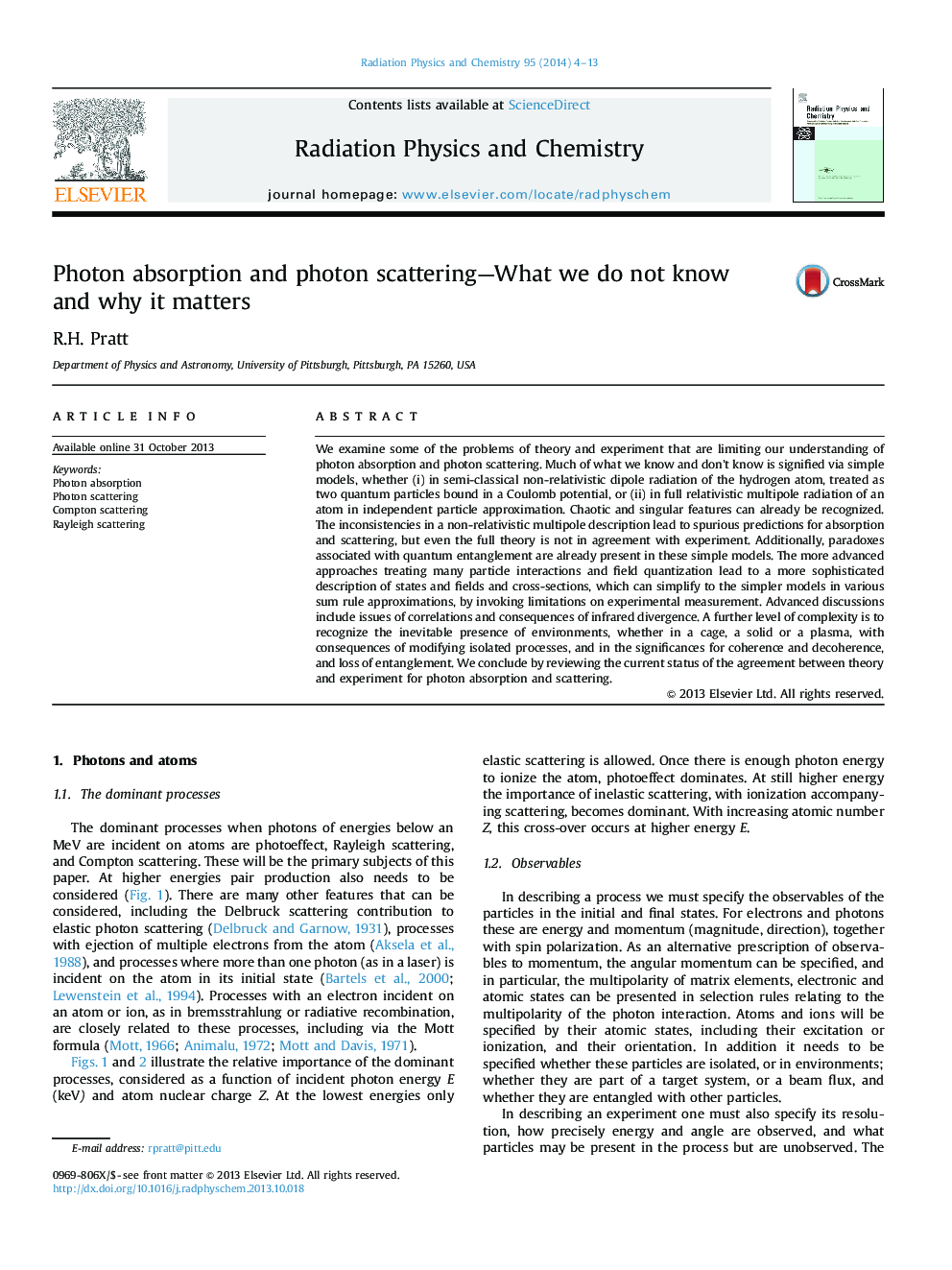| Article ID | Journal | Published Year | Pages | File Type |
|---|---|---|---|---|
| 1882388 | Radiation Physics and Chemistry | 2014 | 10 Pages |
Abstract
We examine some of the problems of theory and experiment that are limiting our understanding of photon absorption and photon scattering. Much of what we know and don't know is signified via simple models, whether (i) in semi-classical non-relativistic dipole radiation of the hydrogen atom, treated as two quantum particles bound in a Coulomb potential, or (ii) in full relativistic multipole radiation of an atom in independent particle approximation. Chaotic and singular features can already be recognized. The inconsistencies in a non-relativistic multipole description lead to spurious predictions for absorption and scattering, but even the full theory is not in agreement with experiment. Additionally, paradoxes associated with quantum entanglement are already present in these simple models. The more advanced approaches treating many particle interactions and field quantization lead to a more sophisticated description of states and fields and cross-sections, which can simplify to the simpler models in various sum rule approximations, by invoking limitations on experimental measurement. Advanced discussions include issues of correlations and consequences of infrared divergence. A further level of complexity is to recognize the inevitable presence of environments, whether in a cage, a solid or a plasma, with consequences of modifying isolated processes, and in the significances for coherence and decoherence, and loss of entanglement. We conclude by reviewing the current status of the agreement between theory and experiment for photon absorption and scattering.
Related Topics
Physical Sciences and Engineering
Physics and Astronomy
Radiation
Authors
R.H. Pratt,
